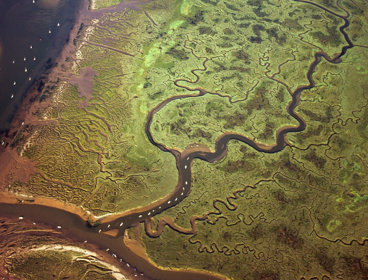The degree awarding gap refers to the difference between the proportion of students from one group awarded a first or upper second-class (2:1) degree compared with another group.
A 2019 report by Universities UK found that a student’s race and ethnicity can significantly affect their degree outcomes. Across UK universities in 2017-18, there was a 13% gap between the likelihood of white students and Black and Minority Ethnic (BAME) students graduating with a first or 2:1 degree classification. By the 2020/21 year the gap had reduced to 8.8%.
However, breaking down the data by individual groups showed that there were larger disparities for Black students. For example, in the 2020-21 year, there was a 19.3% gap between white and Black students awarded a first class degree.
Differences have also been documented for students from lower socio-economic backgrounds and disabled students.
The awarding gap in geography
In 2017, Vandana Desai, calculated that the degree awarding gap in geography between 2013 and 2015 was 11.5%. This was lower than the average for all subjects during this period. But this difference may have been a result of the fact that geography had lower numbers of BAME students, rather than because they were less disadvantaged in teaching and assessment.
A more recent paper by Shivani Singh et al. (2022) analysed the degree award gap in geography, environmental studies, planning and earth sciences as well as students’ experiences of minoritisation in UK universities. They found that, in 2019/20, there was a 7.7% gap between the percentage of white students awarded a first or 2:1 compared with BAME students.
Disaggregating the BAME data showed significant disparities within this. The largest gap (23.7%) was between white students and Black British students.
Singh et al. caution that some ‘targeted interventions’ currently used to reduce the gap, such as peer to peer support, may lock BAME students into a ‘deficit model'. They also argue there is a need to develop further research (particularly on assignment and marking) to understand why the degree awarding gap is substantial for certain minoritised communities.
As context, the following two tables show the geography degree award gap for the 2019/20 academic year. The tables are based on first degree undergraduate qualifiers and the data is drawn from HESA.
|
|
Geographical and environmental studies (natural sciences) |
Geographical and environmental studies (social sciences) |
||
|
|
% First/2:1 |
% 2:2/Third/Pass |
% First/2:1 |
% 2:2/Third/Pass |
|
BAME |
84.1 |
15.9 |
89.7 |
10.3 |
|
White |
89.5 |
10.5 |
93.7 |
6.3 |
|
Disabled |
87.8 |
12.2 |
93.6 |
6.4 |
|
Non-disabled |
88.3 |
11.7 |
92.3 |
7.7 |
|
Female |
92.6 |
7.4 |
96.3 |
3.7 |
|
Male |
82.8 |
17.2 |
87.3 |
12.7 |
|
|
Geographical and environmental studies (natural sciences) |
Geographical and environmental studies (social sciences) |
|
BAME/White |
-5.40 |
-3.98 |
|
Disabled |
0.50 |
-1.34 |
|
Male/Female |
-9.82 |
-9.05 |
Closing the degree award gap
There are several different resources for institutions working to close the degree award gap:
- Advance HE have developed the Race Equality Charter that ‘provides a framework through which institutions work to identify and self-reflect on institutional and cultural barriers standing in the way of Black, Asian and Minority Ethnic staff and students’.
- Universities UK have developed recommendations for universities seeking to close the degree award gap.
- Wonkhe have compiled a number of recommendations on how to address evaluation gaps.
Further reading
- Singh, S., J. Pykett, P. Kraftl, A. Guisse, E. Hodgson, U.E. Humelnicu, N. Keen, S. Kéïta, N. McNaney, A. Menzel, K. N’dri, K. Junior N’goran, G. Oldknow, R. Tiéné & William Weightman (2022) Understanding the ‘degree awarding gap’ in geography, planning, geology and environmental sciences in UK higher education through peer research. Journal of Geography in Higher Education. https://doi.org/10.1080/03098265.2021.2007363.
- Desai, V. (2017), Black and Minority Ethnic (BME) student and staff in contemporary British Geography. Area, 49: 320-323. https://doi.org/10.1111/area.12372.



